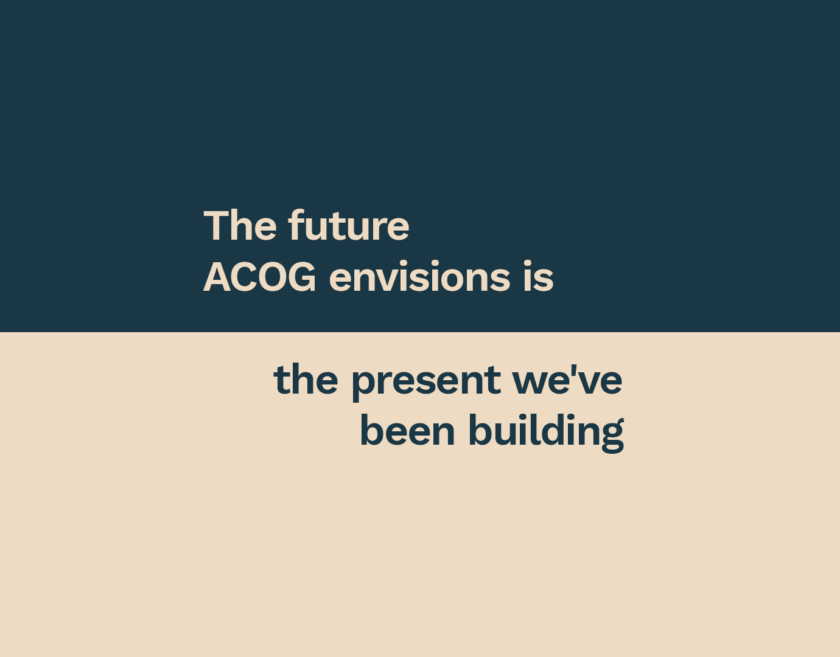ACOG’s New Guidelines End One-Size-Fits-All Prenatal Care

Picture this: You’re 20 weeks pregnant, sitting in a waiting room filled with other expecting parents, all scheduled for the same 15-minute appointment slot. When you’re finally seen, your questions about birth preferences get rushed answers, and you leave feeling like just another number in the system. Sound familiar?
If you’ve ever felt this way during prenatal care, you’re not alone—and now, the American College of Obstetricians and Gynecologists (ACOG) agrees that this approach needs to change. In April 2025, ACOG released groundbreaking new guidance recommending a transformation to U.S. prenatal care delivery, calling for a shift toward personalized, patient-centered care.
The timing feels significant. For nearly a century, expecting parents have been squeezed into the same rigid prenatal care model, regardless of their individual circumstances, health needs, or preferences. Now, ACOG is finally catching up to what patients have long known: every pregnancy is unique, and care should reflect that reality.
Why This Change Was Long Overdue
Formalized models of prenatal care delivery have changed little since they were first published in 1930, with in-person visits every 4 weeks until the 7th month, every 2 weeks until the 8th month, and weekly thereafter. This cookie-cutter approach was designed in an era when detecting preeclampsia was the primary concern—but modern pregnancy care encompasses so much more.
ACOG’s new guidelines recognize this disconnect and recommend transformation in three key areas:
Addressing social determinants of health: Comprehensive assessment of medical, social, and structural factors that affect pregnancy outcomes, ideally before 10 weeks
Flexible visit schedules: Moving away from the standard 12-14 visits toward personalized frequency based on individual risk and needs
Alternative care modalities: Integration of telemedicine, group prenatal care, and remote monitoring options
The evidence supporting these changes is compelling. Research shows that three systematic reviews have demonstrated equivalent maternal and neonatal outcomes with tailored visit schedules using 6–10 visits for average-risk individuals, often with improved patient satisfaction.
What Tailored Prenatal Care Actually Looks Like
So what does this transformation mean in practice? The shift toward personalized care involves several key components that work together to create a more comprehensive and responsive prenatal experience.
Comprehensive Assessment Beyond Medical History
Modern prenatal care starts with understanding the whole person, not just their medical chart. This means evaluating social factors that significantly impact pregnancy outcomes—like housing stability, work demands, access to healthy food, and mental health support. The PATH (Plan for Appropriate Tailored Healthcare in Pregnancy) panel, which informed ACOG’s recommendations, emphasized that these social determinants of health are just as important as clinical risk factors.
Shared Decision-Making That Actually Involves You
Rather than being told what your care plan will be, evidence-based shared decision-making puts you at the center of these conversations. This might involve tools like the BRAIN framework—Benefits, Risks, Alternatives, Intuition, Nothing—to help you understand your options and make informed choices that align with your values and circumstances.
Technology That Enhances Rather Than Replaces Connection
Strategic use of telemedicine can reduce travel burden and make care more accessible without sacrificing quality. Virtual follow-ups after routine appointments, remote blood pressure monitoring for those who need it, and digital check-ins for mental health screenings can all complement in-person care when used thoughtfully.
Group Care and Community Connection
Group prenatal care models have shown particular promise for addressing health disparities. Research demonstrates that African American patients with low incomes who participated in group care had significantly reduced preterm birth rates compared to individual care models.
What This Means for Your Pregnancy Experience
This shift toward tailored care has real implications for how you experience prenatal appointments and pregnancy support:
More meaningful conversations during appointments, with time to address your specific concerns and circumstances
Care plans that actually work with your life—considering your work schedule, family responsibilities, and transportation realities
Support for the whole picture of your health, including mental health, nutrition, and social challenges
Choice in how you receive care, whether that’s traditional in-person visits, virtual check-ins, or group sessions
At Oula, these principles have guided our approach from the beginning. Our collaborative model ensures you have access to both midwifery care and obstetric expertise when needed, and our focus on shared decision-making means your preferences shape your care plan.
The Broader Impact
ACOG’s endorsement of tailored prenatal care represents more than just updated guidelines—it’s validation of what advocates for maternal health equity have long championed. When care is personalized, it’s more likely to address the disparities that affect outcomes for marginalized communities.
The future of maternal healthcare is collaborative, personalized, and responsive to individual needs. While it may take time for the broader healthcare system to implement these changes, the shift toward patient-centered care is already underway.
Your pregnancy deserves more than a one-size-fits-all approach. It deserves care that sees you as a whole person, respects your preferences, and adapts to your unique circumstances. ACOG’s new guidelines are an important step toward making that kind of care the standard, not the exception.
References:
